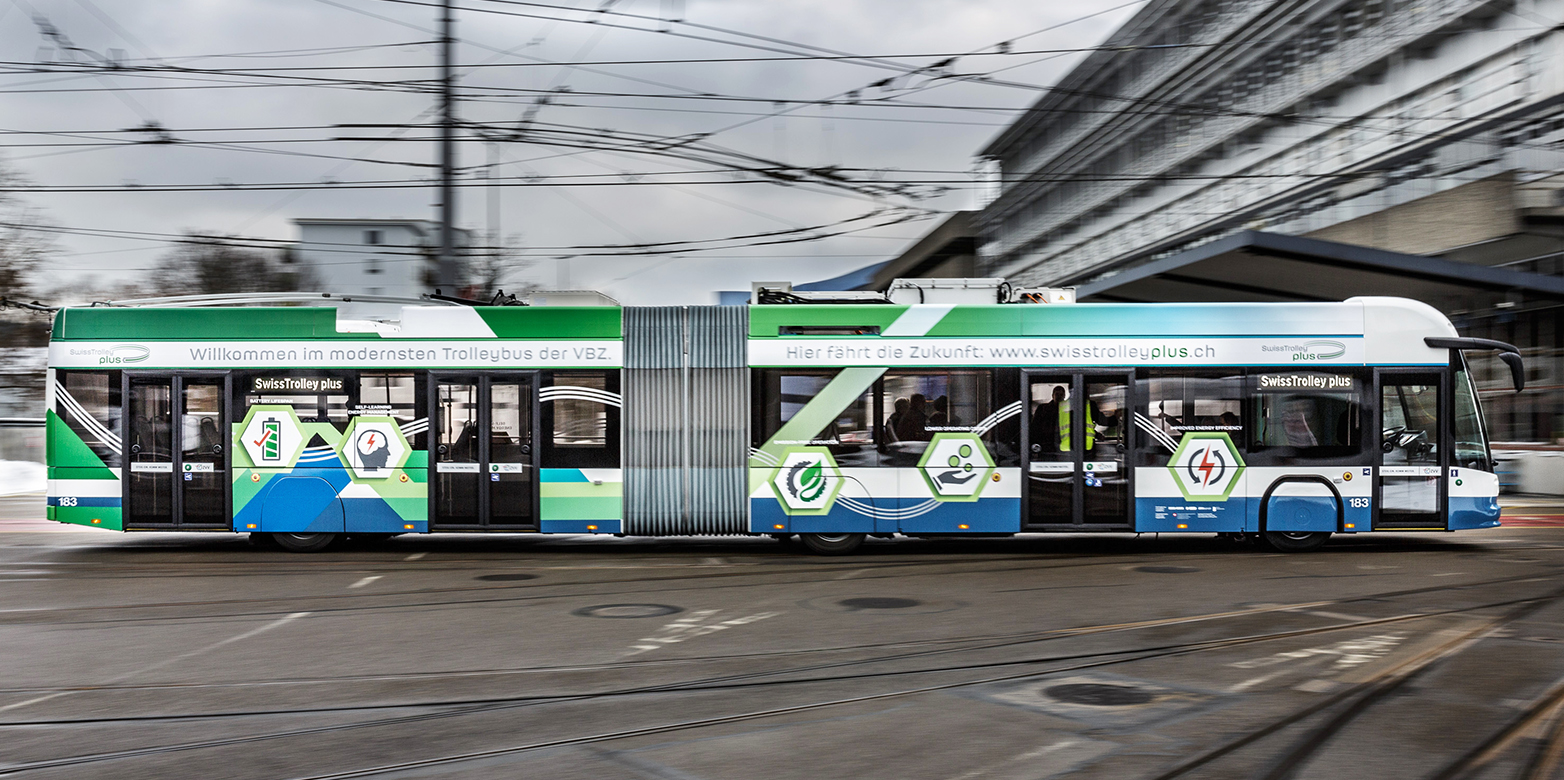What racing cars and trolleybuses have in common
The first Formula E race in Zurich will take place next Sunday. Before then, ETH Zurich will place the topic of e-mobility in a wider context on Friday as part of its eDays symposium.
They could hardly be more different – here you have a Formula 1 Ferrari, there a trolleybus operated by Zurich’s public transport authorities. And yet the red race car and the blue-and-white vehicle actually have two things in common. Firstly, they are both subjects of research at ETH. Secondly, both run on hybrid engines that can switch between two energy sources. That’s why the findings that researchers gain in the field of racing can also assist public transport – and vice versa.
More on that later. In any case, it will certainly be of relevance to mobility research when the first car race held in Switzerland for 64 years takes place next Sunday. Particularly because the event in Zurich is a Formula E race, in which the race cars compete exclusively using electric drive. Electric engines are considered a technology of the future on the pathway to sustainable mobility. ETH would like to discuss the issue in a broader context, which is why it is staging a symposium (see box) next Friday, 8 June.
Targeting climate objectives
Among the speakers are Konstantinos Boulouchos, Professor for Energy Technology at ETH and Head of the Swiss Competence Center for Energy Research - Efficient Technologies and Systems for Mobility (SCCER Mobility). Boulouchos points out that focusing on electromobility alone isn’t enough to reduce CO2 emissions from traffic and so attain climate objectives. This is not to say that he doesn’t believe electric engines will play a significant role in the future, however. “In the mid to long term they may make up 30, perhaps even 70 percent of overall mobility,” he estimates. But we still have a long way to go before then. “People will continue to buy cars with combustion engines for a while yet. That’s because, among other things, the costs are significantly higher [for electric cars] and the range isn’t wide enough for all applications yet.” That’s why he isn’t calling for more plugs. Instead, Boulouchos says, “I am more interested in showing what legislators, individuals and industry can do right now to achieve a lot in a short time.”
Alternative drive systems and renewable fuel
As an example, the ETH professor mentions measures aimed at establishing hybrid engines as a standard technology. And with all the talk of electromobility at the moment, it’s important that we bear in mind research into other alternative drive systems – including renewable fuels such as hydrogen and synthetic hydrocarbons. His research encompasses these renewable chemical energy sources and the question of how best to deploy them. He is also looking for efficient ways to link up the mobility and electricity sectors.
Christopher Onder, Professor for Dynamic Systems and Control at ETH, also stresses that there are no simple solutions in the issue of sustainable mobility. While there is still extensive public-sector support for electromobility, it is reaching its limit. Onder points to barriers beyond the lack of a charging station network: “There is a large environmental cost associated with the manufacture of batteries.” What’s more, electric engines aren’t actually CO2-free per se. “Whether or not a vehicle is clean naturally depends on how the required electric energy is produced.”
Optimising energy management
And that comparison between the Ferrari and the trolleybus? Onder is taking part in two research projects that address precisely these vehicles, which he will be reporting on in detail at the symposium. While Formula 1 is preoccupied with the search for an optimal mix of petrol and battery that still conforms to regulations, for the trolleybus it is the switch between electricity and battery that is key – in the event of interrupted power supply, for instance, or on stretches without overhead cables. “Both cases are concerned with the optimisation of energy management.” And so the fact that Formula 1 is primarily preoccupied with speed (which helps the Ferrari win the race) while public transport is concerned with optimising energy consumption (which ensures the bus doesn’t come to a halt) is neither here nor there. “At least not for the engineers,” laughs Onder.
eDays Symposium at ETH Zurich
Starting at 9 a.m. next Friday, 8 June, the all-day eDays symposium “Intelligent paths to the mobility of the future” will take place in ETH’s main building. In the morning, the symposium will look at which innovations in drive systems and fuels could support sustainable mobility. The afternoon is devoted to mobility in cities.
The symposium is part of eDays, the accompanying programme leading up to the Formula E race in Zurich on Sunday. The symposium is open to the public, but places are limited. Registration and programme: www.ethz.ch/edays
ETH pavilion at the racecourse
On the racing weekend of 9/10 June 2018, ETH students will present their own mobility projects at the Allianz e-village in the Arboretum. Experts from ETH will also be explaining their intelligent energy management systems with short journeys aboard the “Swiss Trolley plus”. More

